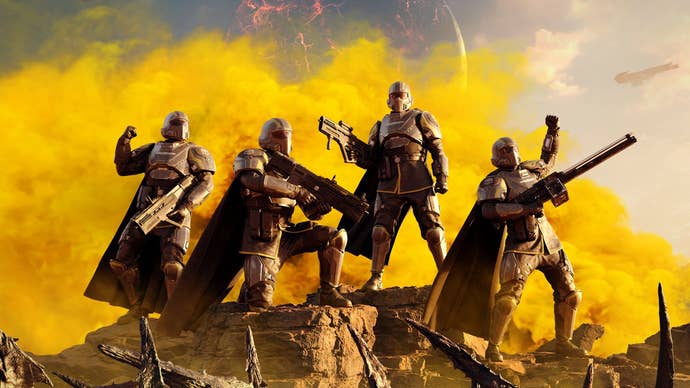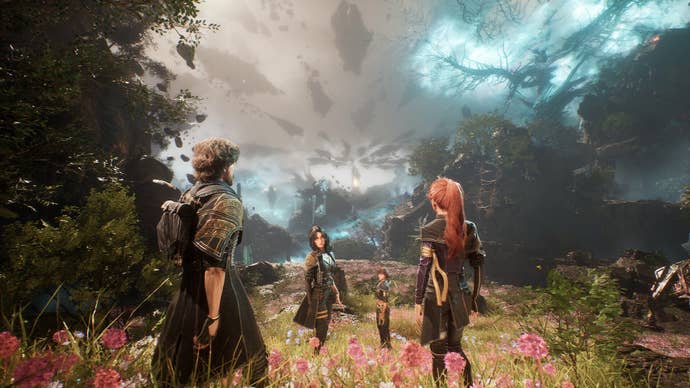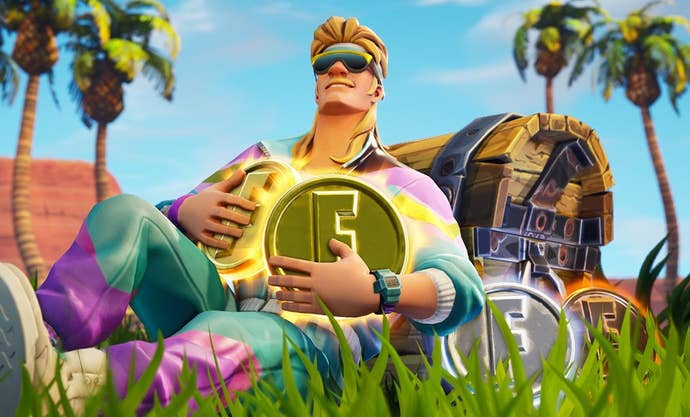In part one of this two-part feature, former Sony Worldwide Studios chairman Shawn Layden, Circana senior director Mat Piscatella, and Ampere Analysis head of games research Piers Harding-Rolls examined some of the current big issues facing the games industry. Now, in part two, they look ahead to the future.
With signs that the video games market has reached maturity, are we currently entering a post-growth phase? Not necessarily, says Harding-Rolls, who points out that there are still parts of the market that are under-developed.
Women make up an enormous segment of the audience, for example – accounting for roughly half of Switch players – but Harding-Rolls says they tend to be less engaged than men. “They play and pay a lot less, and they generally don’t see themselves as [gamers], they don’t self-describe as gamers.”
There is clearly still room to more effectively target different demographics, then, even in a maturing market. “It’s less about the pricing of content,” says Harding-Rolls, “it’s more about the suitability and engagement of content, making it suitable for different types of audiences.”
“Are we serving those people with the right kind of discovery mechanisms for that kind of content? Are we interesting them in the games?”
The platform-agnostic future
In terms of where people will play games, however, it feels like the days of platform-exclusive content are numbered.
“My thought is that the industry is going to move to a model that makes content easily accessible wherever, whenever and with whomever,” says Piscatella.
“Everything’s kind of melding together. Everyone’s publishing everywhere. There’s no more rules when it comes to what goes where or how someone can play, or what game talks to what thing and service.”

We have already seen this with PlayStation and Xbox launching their games on each other’s platforms, and Piscatella notes that the younger generation in particular is demanding platform flexibility.
“The expectation is that whatever I want to play, I can play it wherever I want. And if you can’t do that, I’m not interested.”
The ultimate platform flexibility, of course, is provided by PC gaming – which along with mobile is emerging as the preferred format for younger players.
Harding-Rolls points out PC has a way of surfacing and elevating interesting content that probably wouldn’t be possible on other platforms. “Steam has this unique position in the market for doing that.”
“The expectation is that whatever I want to play, I can play it wherever I want”
Mat Piscatella, Circana
He highlights the surprise breakout hit Schedule I, noting that its low price was a key factor in its success – and something of great importance for a highly price-conscious younger generation. “And also, if you don’t like it, you can just refund it on Steam.”
“There’s a lot of regular Steam users who are looking out for those kind of viral hits,” he adds, noting that these players have built relationships with streamers who highlight interesting new content.
Console decline
But whereas PCs appear to be in the ascendant, the picture for consoles is less rosy.
Way back in 2013, people predicted that the PS4/Xbox One generation would be the last – predictions that would prove to be unfounded. But could it be different this time? Or the next?
Shawn Layden, although convinced that we’ll see another console generation, isn’t certain that everyone will be joining the party. “Watching what Xbox has been doing recently, I do get Dreamcast flashbacks,” he says.
“I think Sega realised they just were better off being a software house. I think Microsoft is in that same sort of fork in the road. And I don’t think their hardware offering is persuasive enough to make up the ground they’ve lost.”
It’s perhaps expected that a former PlayStation boss is unlikely to be bullish on Xbox – and the fact that Microsoft has signed a multi-year agreement with AMD for future consoles certainly seems to indicate that the company is not quite ready to bow out of the console business just yet, even after trailing Sony by a considerable margin for the past two generations.
“We’re just getting more money from the same people, and we need to get more people, not just more money”
Shawn Layden
But there’s a possibility that the next Xbox generation will be more flexible, perhaps running Windows and providing access to other storefronts – more like a PC. And Layden would welcome a more standardized hardware offering.
“Can’t we look at the game console business kind of like Blu-ray, or cassette, or compact disc, or any other medium where the industry decided we’ll compete on content, but let’s standardize on format? And then let’s take that format and license it out to everybody who wants to support it.”
“That’s what stops the penetration rate of console gaming, I think.”
He reckons there’s the potential to expand the currently static size of the gaming audience if other electronics manufacturers, like Toshiba or Samsung, could be brought on board, perhaps incorporating gaming functionality into TVs.
“My conjecture is that we’re just getting more money from the same people, and we need to get more people, not just more money.”
Of course, we’ve been here before. Back in the 1990s, The 3DO Company attempted to create a gaming standard, where consoles were manufactured by a variety of firms. But it ultimately failed – at least partly – because of the prohibitive cost.
Rather than selling console hardware at a loss and then making the money back on games, 3DO manufacturers like Panasonic had to make a profit from the hardware itself – contributing to that infamous $699 launch price (equivalent to around $1,500 today).
But Layden thinks that now, in an age when differences between console generations are becoming increasingly difficult to spot, there could be a way to make the model work.
“I think we’ve plateaued on the tech, frankly,” he says. “How many of us can really tell the difference between 90 frames per second and 120 frames per second?”
Perhaps, instead of pushing for incremental gains, manufacturers could instead focus on affordability and standardization, he thinks.
“Make it cheaper and simpler. Let’s do that instead. And let’s find a way to have more hardware companies participate.”
Free-to-play becomes the default
But the idea of buying consoles and paying premium prices for new video games is very much the preserve of the older generations, says Piscatella.
“What you’re seeing in the play pattern, particularly with younger consumers, is a default to the free-to-play entry point,” he says.
“The data is clear that the console buyer is becoming older and more affluent, and the younger generations are choosing more often to default to mobile or PC because of the ease of entry and because they already have the devices.”
“So, I think eventually over time, we’re going to get to the point where we more fully transition towards that free-to-play model as a baseline over the next, say, 20 years, 30 years.”
The thinking is that as they grow up, the younger generations will retain their allegiance to free-to-play titles, potentially sidelining the premium sector of the market.
As Piscatella notes, a 30-hour, $80 RPG is a hard sell against something as “big, complex, and with so many different ways of playing” as Fortnite.
“When you look at the play data,” says Piscatella, “when a third of people who turn on their consoles every week are playing Fortnite, when half of the total hours spent on PlayStation or Xbox every month are taken up by just the top ten live-service games before any other game can even get a taste… I mean, the data is pretty clear that those games are winning the war.”
“We’re going to get to the point where we more fully transition towards that free-to-play model as a baseline”
Mat Piscatella, Circana
There’s a chance that Generation Alpha might also be playing those same games in 20 years’ time – games that could subsume practically everything.
“Every IP holder is trying to get their IP into a Fortnite or into a Minecraft rather than building out their own games, because they know that’s where the audience is,” says Piscatella.
“That’s going to be the biggest challenge, I think, for everyone in our space going forward. And I don’t know how it gets solved.”
But Layden isn’t necessarily convinced that the younger generations will carry their mobile-centric, free-to-play habits with them into adulthood.
“If folks think that young people never change their mind until they die, then perhaps that could be true,” he says.
“But as we all grow older, we all move towards different interests and different enthusiasms. And where I might have been happy to burn a whole afternoon sitting there doing something on my phone, maybe as I get older, I’d like to just sit down in my apartment – now that I have an apartment – and enjoy gaming.”
Perhaps it’s too hasty to forecast the death of consoles and the fall of premium games. Perhaps consoles and premium titles will just be something the younger generations graduate to as they get older and more affluent.
Or perhaps not. Only time will tell who is right.
New ways to play
In terms of what future games will look like and how they might be distributed, Harding-Rolls notes that bigger publishers are now looking at early access as a strategy, with the thinking being, “how can we get content to market more quickly and test it?”
Early access has traditionally been the preserve of indie titles and sometimes mid-range games, but Harding-Rolls thinks it could soon extend to AAA titles, too.
It would certainly be a way to offset years-long development cycles and provide time for useful community feedback, rather than placing a $100 million, all-or-nothing bet that an audience will like a game at launch.
In terms of the types of games that get made, Layden notes that there’s a bit of content fatigue in the market right now. “We’ve just been doing the same thing for so long, and we’re just kind of wondering, can we get something new?”

But that something doesn’t have to be entirely unique. He notes that now games have been around for quite some considerable time, there’s room to revisit and re-imagine old genres – like AstroBot did for platformers and Clair Obscur: Expedition 33 did for turn-based RPGs.
“Everything old is new again,” he says.
Crucially, Layden thinks, games with a mid-range budget will be the best-placed to experiment and reap the rewards for trying something different, with smaller companies able to move more quickly than AAA giants to adapt to changing market needs.
“I think that’s where the growth is going to be,” he says. “We’re going to see a rebirth of what we used to call – or we could still call it – AA gaming, with a wide variety of content and games.”
“If you have the right story, if you have the right environment, if you have great characters, anything works.”
“Let’s stop chasing photo realism, guys. We’re never going to get there anyway.”
Industry realignment
Conversely, Layden thinks there will be more contraction at the top end of the industry.
“I mean, we’re seeing it right now,” he says. “The gigantic companies like EA, Sony, Microsoft, Ubisoft, they have all expanded to an unsustainable size, largely during COVID when gaming revenues went up 22% year-on-year, and people thought this rocket was going to the moon.”
“So they started hiring people all over the place, and the hiring of people all over the place caused the knock on that salaries went up dramatically.”
Now, those companies are attempting to correct for their largesse. “You’re seeing a lot of layoffs in the industry, which is sad,” says Layden, “but maybe it’s a readjustment, a realignment of the business.”
“I see the impact of AI on gaming as the impact of Excel on certified public accountants”
Shawn Layden
“You’re seeing studios or projects being cancelled, really not out of any problem with the game per se, it’s just the cost structure was not sustainable, and they had to clear their balance sheets. There’s a lot of that going on right now.”
He also doesn’t think that AI will have as big an impact as advertised in terms of lowering staff costs or improving the efficiency of game-making.
“I see a lot of estimation or prognostication about how AI is going to revolutionize gaming, from mostly people who are not in gaming, saying that ‘I think there are ways that it helps accelerate certain functions’,” he says.
“I see the impact of AI on gaming as the impact of Excel on certified public accountants.”
“It was better to have a macro and do your sums that way rather than on an adding machine. But you still had to have enough knowledge to realise, ‘Is that the right sum’? And then how do you interpret that?”
But Layden notes that outsourcing options have dramatically improved over the years.
“Sometimes in the early days,” he says, “it would have been cheaper to do it ourselves instead of having it redone nine times because we just couldn’t get a meeting of the minds with the outsourcing company overseas and the developers here.”
Now, however, he thinks things are markedly better on that front.
“The connection between core development teams and engineering resources in Taiwan or art resources in Malaysia, I think those are getting better optimized all the time.”
Even though the combination of outsourcing and AI could help to curb the rapid acceleration of game development costs, he says, “I’m not sure it will actually create the deceleration of cost.”
A different way of doing things
Layden thinks the future of game development will look more like movie production, in that studios will retain only a small band of creative directors and producers.
Then, rather than hiring a full-time team of, say, 200 people, the studio would instead hire in contractors or co-development studios once pre-production is done and the concept is nailed down.
He points out that there are times during a game’s development when “certain disciplines aren’t needed, or aren’t super active, or in fact have finished their work and are waiting for the next game.”
It makes more sense, he thinks, to “bring in discrete groups at different times.” At the beginning, perhaps just a core engineering team is needed to nail down key mechanics and work out what’s fun, he suggests. “You know, does Spider-Man swing on the web in a nice sort of way?”
“If you can’t show you can do that, then do not pass go.”
Layden thinks we’re already well along the road to this production pattern. “I think we’re halfway there,” he says.

Aside from making game production more efficient and sustainable, the greatest challenge to future games will be competing against those already out there – and that are refusing to go anywhere.
“You look at something like Fortnite,” says Piscatella. “It’s been, what, seven, eight years now that that thing’s been the biggest thing in the world. Or Minecraft. And Grand Theft Auto 5 launched in 2013. It’s still one of the top 20 bestselling games every single month.”
“The biggest competitor to Grand Theft Auto 6 will be Grand Theft Auto 5. It’s wild times to be trying to make new video games.”
But Layden has hope that we’ll see a new wave of fresh and exciting titles thanks to the re-emergence of AA games, from studios that can afford to take greater risks thanks to their more modest budgets.
“I think the future is going to be a wider variety of games,” he says.
“I’m not worried about the future.”
Source link
#Big #Picture #Part #cheaper #simpler #Lets






























